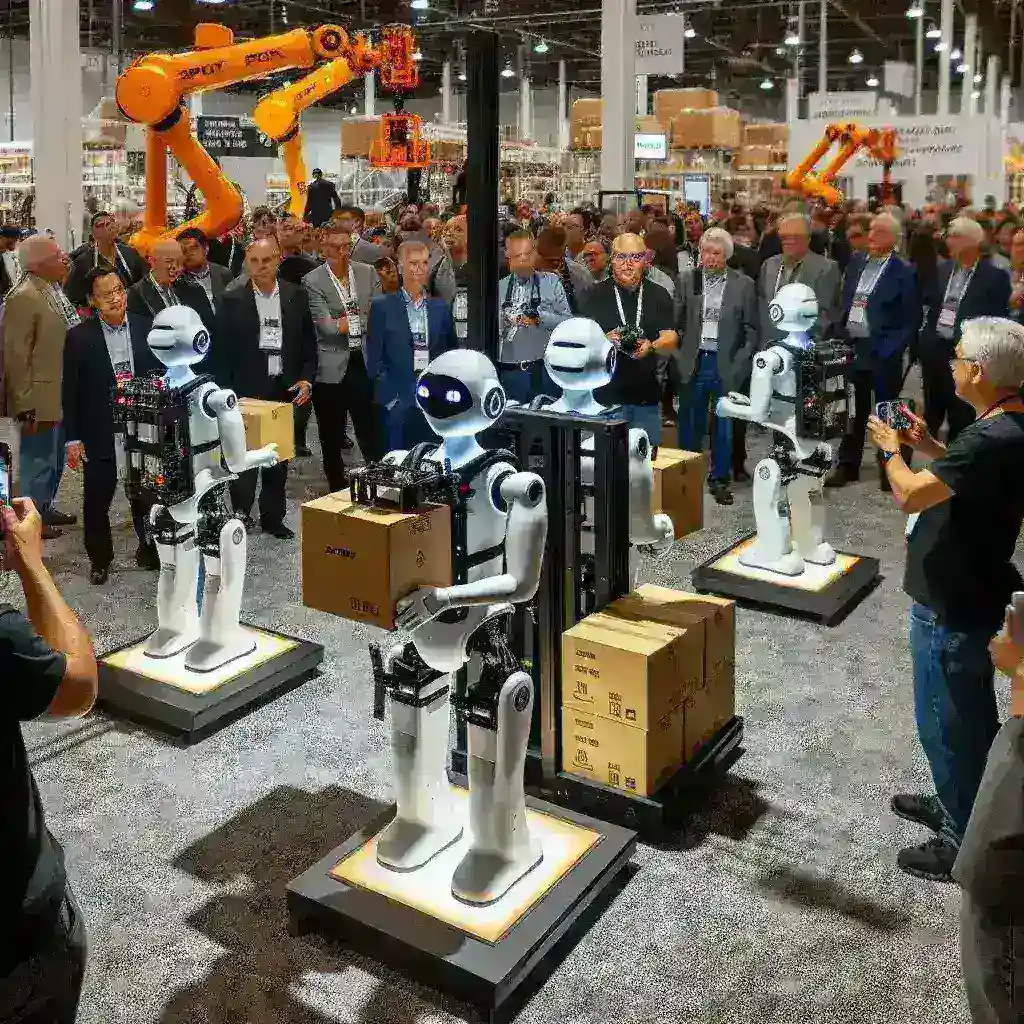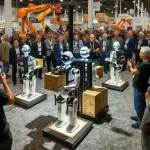Boston Dynamics Demonstrating Warehouse Humanoids at U.S. Trade Show
As the world becomes increasingly automated, the role of robotics in various industries continues to evolve. This evolution was on full display at the recent U.S. trade show where Boston Dynamics unveiled their latest advancements in humanoid robots specifically designed for warehouse operations. These robots promise to reshape the logistics landscape, enhancing efficiency and productivity in ways previously thought impossible.
The Rise of Robotics in Logistics
The logistics industry has long been at the forefront of adopting innovative technologies. The introduction of robotics has transformed the way goods are stored, handled, and dispatched. Boston Dynamics, a leader in this field, has taken significant strides in humanoid robotics, demonstrating robots that can navigate complex warehouse environments, interact with human workers, and perform various tasks autonomously.
Features of Boston Dynamics’ Warehouse Humanoids
The humanoids showcased at the trade show are equipped with state-of-the-art technology, allowing them to perform a variety of tasks. Some of the standout features include:
- Advanced Mobility: The robots can walk, run, and climb stairs, making them adaptable to different warehouse layouts.
- Object Manipulation: With dexterous hands, these humanoids can pick up, sort, and move items of various shapes and sizes.
- Artificial Intelligence: Powered by AI, these robots can learn from their environment, improving their performance over time.
- Safety Protocols: Equipped with sensors and cameras, they can detect and respond to obstacles, ensuring safe interaction with human workers.
Demonstrations at the Trade Show
The live demonstrations at the trade show captivated attendees, showcasing how these humanoids can assist in day-to-day warehouse operations. For example, one robot efficiently retrieved packages from shelves, while another expertly navigated through a crowded space, avoiding collisions with both humans and obstacles.
Real-World Applications
The potential applications for these humanoids are vast. From large distribution centers to smaller warehouses, the ability to automate repetitive tasks can lead to significant cost savings and increased efficiency. As an example, a major retailer demonstrated how integrating these robots into their supply chain could reduce order fulfillment times by up to 30%.
Future Predictions
As companies continue to invest in automation, the future of warehouse operations looks promising. Experts predict a gradual shift towards fully automated warehouses, where humanoids will work alongside human employees, enhancing overall productivity.
Pros and Cons of Warehouse Humanoids
While the benefits of deploying humanoid robots are clear, there are also challenges that need to be addressed:
- Pros:
- Increased Efficiency: Robots can work longer hours without fatigue, leading to improved output.
- Cost Reduction: Automation can decrease labor costs over time.
- Enhanced Safety: Robots can take on hazardous tasks, reducing the risk of injury for human workers.
- Cons:
- Initial Investment: The upfront costs of implementing robotic systems can be substantial.
- Job Displacement: Concerns about job loss for human workers are prevalent as automation increases.
- Maintenance Needs: Robots require regular maintenance and updates, which can incur additional costs.
Cultural Relevance and Public Perception
The introduction of robots into the workforce is not just a technological shift; it is also a cultural one. Public perception of robots, particularly humanoids, is mixed. While many view them as a positive advancement, others express fears about job security and the ethical implications of replacing human labor.
Expert Quotes
Experts in robotics and automation emphasize the importance of striking a balance between technological advancement and human employment. Dr. Sarah Thompson, a leading robotics researcher, states, “The key is collaboration between humans and robots. When used correctly, these technologies can complement human skills rather than replace them.”
Personal Anecdotes
Attendees at the trade show shared their thoughts on the demonstrations. Tom, a warehouse manager, remarked, “Seeing these robots in action was eye-opening. I can imagine how they can make our operations smoother and faster.” Meanwhile, Sarah, a logistics coordinator, expressed concerns, saying, “I worry about what this means for my job. I hope there will still be a place for us in the future of warehousing.”
Conclusion
Boston Dynamics’ demonstration of warehouse humanoids at the U.S. trade show marks a significant milestone in the journey toward fully automated logistics. As these robots become increasingly integrated into operations, they hold the potential to transform the industry, improve efficiency, and reshape the future of work. While challenges exist, the promise of a collaborative future where humans and robots work side by side is on the horizon.
In summary, the advancements in robotics, particularly in the realm of humanoid technology, signify a profound shift in how industries operate. As we look to the future, the question remains: how will we adapt to this new landscape of work?






Leave a Reply